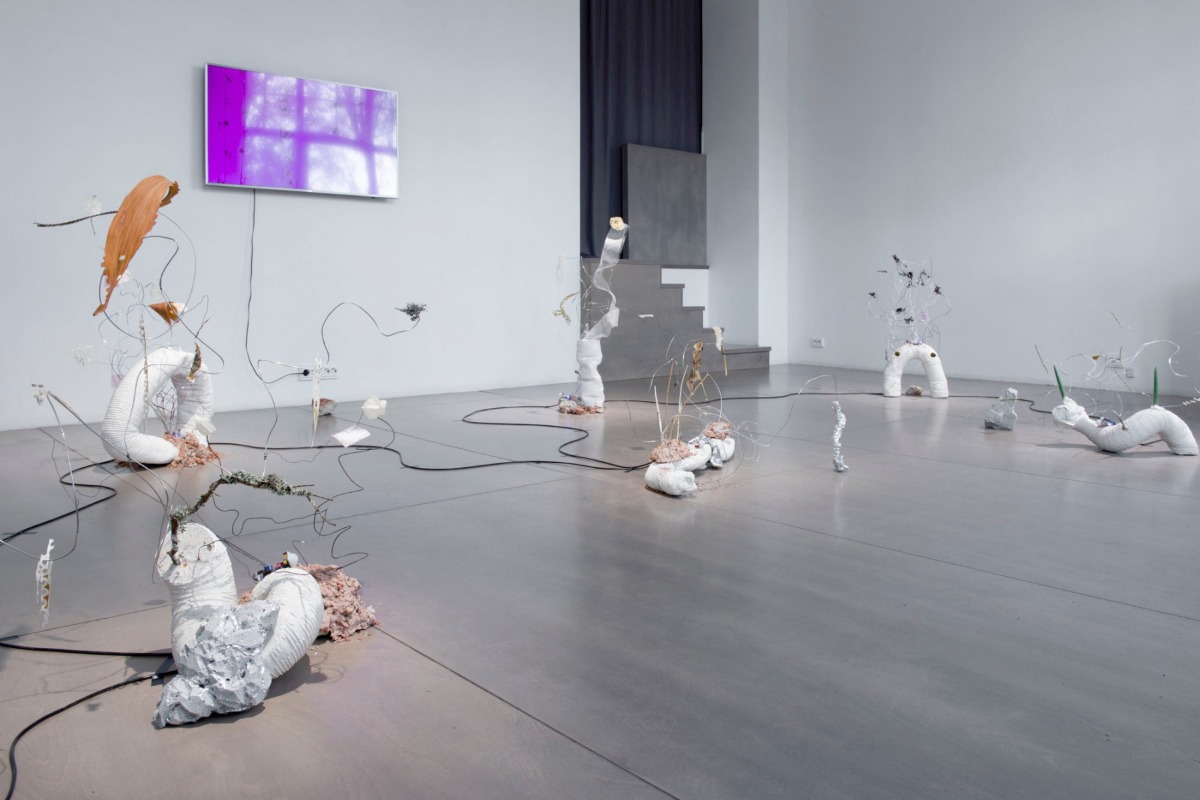
An attempt to approach the quiet and the subdued
A short conversation with Kristīne Krauze-Slucka, winner of the 2020 Grand Prix Nordic and Baltic Young Artist Award
The winners of the 2020 Nordic and Baltic Young Artist Award were announced last week. The international jury decided to award the Grand Prix to artist Kristīne Krauze-Slucka for the exhibition Orgatopia, which was shown last autumn at RIXC, The Center for New Media Culture.
Orgatopia was a manipulative study of plant resistance in which over several months, Krauze-Slucka influenced the plants’ physiology through various mechanical methods. Combining these plants that had been subjected to change with other inorganic materials and electronic processes, Krauze-Slucka created both a video projection and six installations composed of biomorphic kinetic “hyperobjects”.
Changes in the relationships between humans and nature is a featured subject in Krauze-Slucka’s artistic practice – she brings attention to the processes of adaptation and hybridisation, often bringing the material aspects of the chosen medium to the forefront.
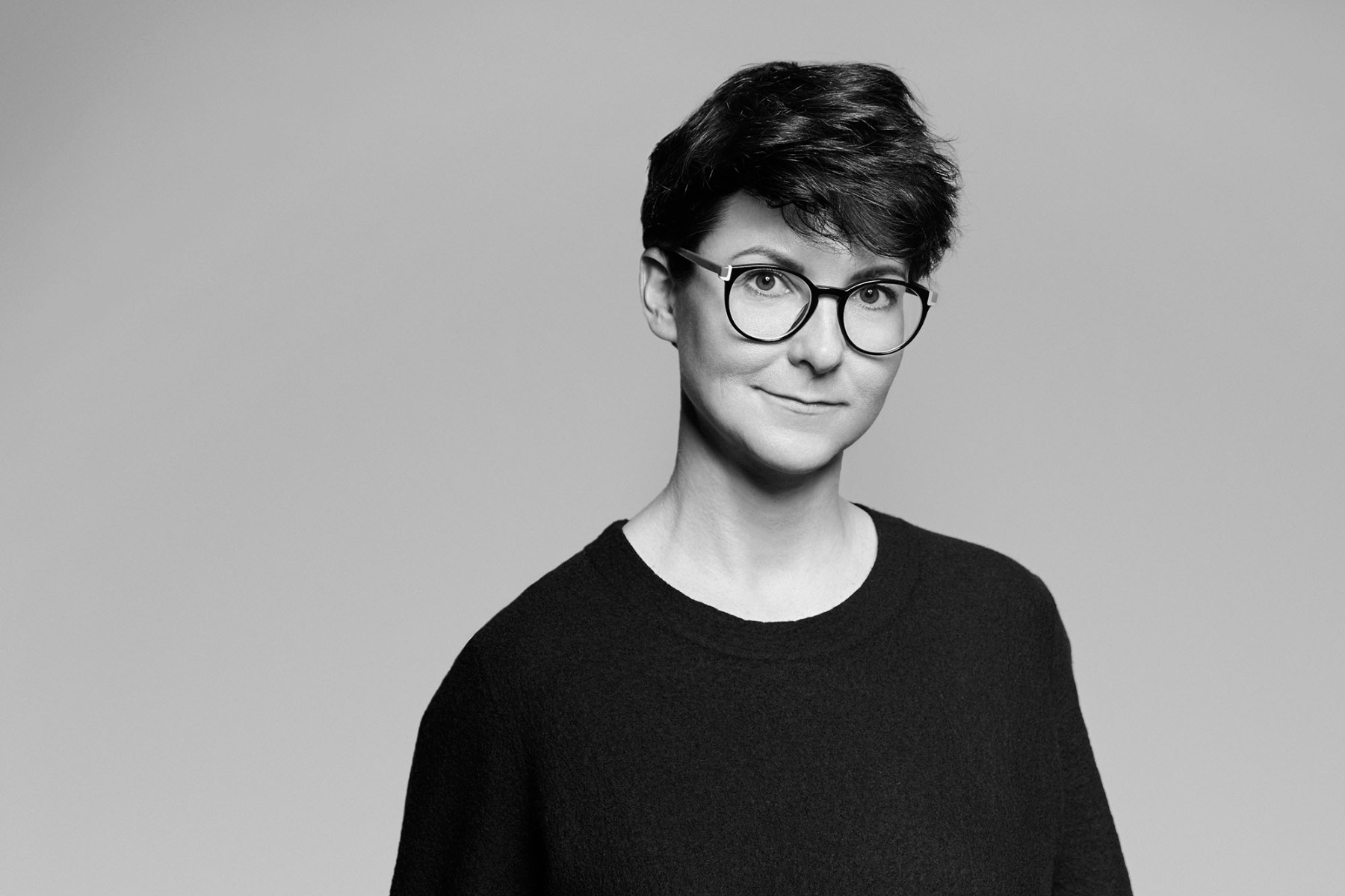
In commenting on your exhibition Orgatopia, one of the members of the international jury for the 2020 Nordic and Baltic Young Artist Award, Anne Klontz from Konstfack (Sweden’s largest university for arts, crafts and design), emphasised the message of your work – a narrative that focuses on an issue important both now and in the future: the endangerment of nature. Do you think artists have the capacity to influence or direct society’s actions and way of thinking?
Admittedly, this question constantly raises questions and contradictions about the extent to which contemporary art should bear some socio-political burden or be responsible for something. It is definitely each artist's personal worldview and choice of action. In any case, during the creation of Orgatopia, my goal was to personally approach this slow and seemingly remote process of ecological violence by focusing on the quiet and the subdued, namely, plants and their potential for adaptation. The pseudo-scientific foundation for the work came from American anthropologist Ann Tsing’s thesis that art can give ideas, influence, and experiment with the reality of the living and damaged world.
Kristīne Krauze-Slucka. Installation “Orgatopia”, RixC gallery, 2020
In this context, I am also persuaded by Joseph Beuys’ view that society, as a whole, is a social sculpture in itself and forms the world in which it lives. I find some consolation in the situation from the awareness that objects created by artists serve as a mental stimulus that can lead to reflection on what interconnections visible materials or a set of works form in the context of space-time and evolution.
Kristīne Krauze-Slucka. Installation “Orgatopia”, RixC gallery, 2020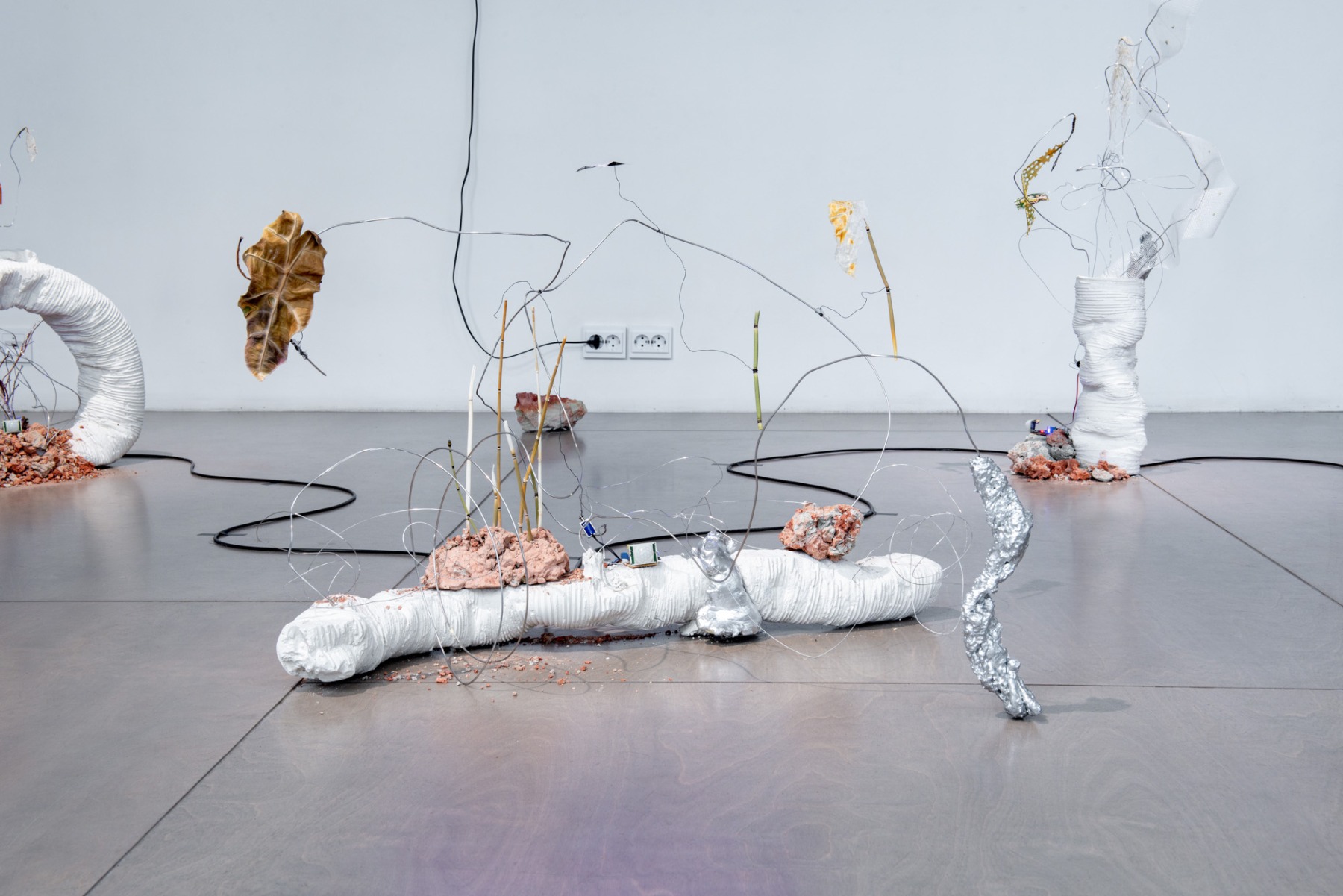
The central theme of your practice is the study of the relationship between nature and humans. Today's human has distanced themself from nature, but at the same time, as philosopher Michael Marder reminds us, Aristotle thought that the most basic level of the psyche is the vegetal, whereas Hegel considered human lungs as analogous to the leaves of plants. Do we have the capacity to resume a close relationship to nature in the foreseeable future? Has the pandemic opened our eyes with its harsh reminder that we are not the crown of creation?
If we were to perceive the pandemic as an action of art, then it is the most relevant one we have ever experienced. Suddenly, after a week of travel and mobility restrictions, when people who were accustomed to daily air pollution in the world's largest cities went outside or opened a window, they discovered a new reality – that the air could be cleaner and more pleasant – in other words, what it should normally be like. This is such a universal characteristic of ours – until we lose something that we take for granted on a daily basis, we will not be able to assess the totality of the consequences of our actions. I find it valuable that (as with any drug with various contraindications) the positive side of the pandemic is a slowdown in our almost automated pace of life. I think it is a very good time to reassess things, especially to test the emotional gaskets that tremble inside us and on which, in fact, rests our spiritual stability and the decisions we make and the messages we share.

When speaking of your work, it is frequently mentioned that it often focuses on "aspects of materiality". How would you comment on / explain this characterisation?
I like to work with a material as an independent medium or structure that stimulates the imagination and associations connected to that particular material’s purpose, form, or other characteristics; I like to exploit its potential and interactions with other materials. The context and the connections between the speculations in my head and the qualities of the material are important because they have this ability to submit, resist, and come up with new ideas. This can be seen quite directly in my works; for example, in Orgatopia, I deliberately chose to work with rather primitive materials, such as gypsum, wire and Makroflex foam, which are used in creating the human environment, i.e. in construction. At the core of this decision was the idea that if much of what we do is against the interests of nature and the earth, then it is a movement towards primitivism. While taking Peter Bialobrzeski's international master class "A Sense of Change", I made Echo, in which I created images on plant leaves through the natural method of photosynthesis in order to reflect on the changes that take place in the natural state of humans. By consciously choosing to work with creating images on an organic material through a natural process, then later converting these images into data by scanning and printing it out as a final product, the original natural state is lost.
Echo, 2019. © Kristīne Krauze-Slucka
Echo, 2019. © Kristīne Krauze-Slucka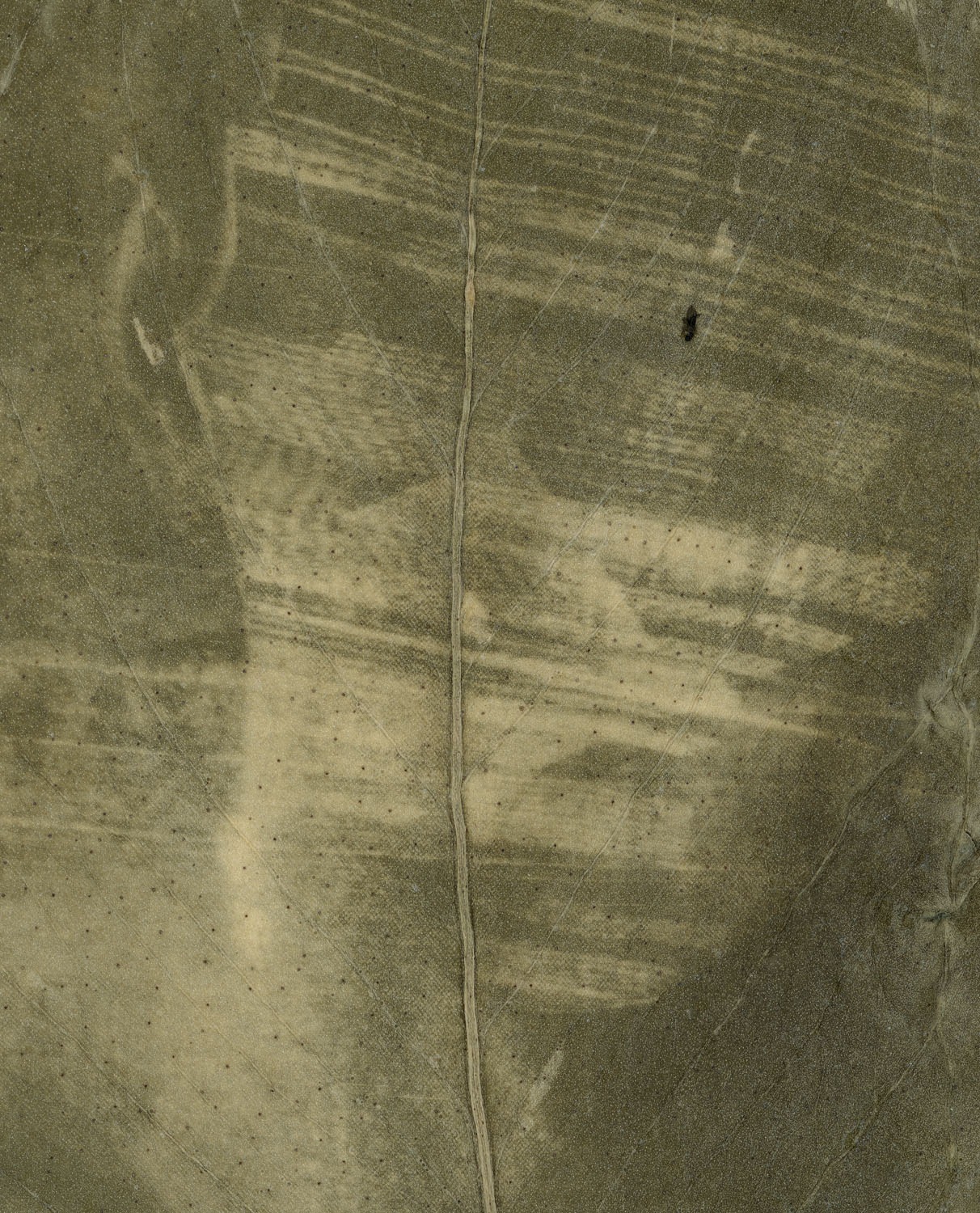
Reflections on the materiality of photography also manifest in my latest work, The Vibrations of the Material Universe. Golden Thirst, which is dedicated to people’s unquenchable thirst for new images and the pollution caused not only by this abundance of images, but also by the photographic chemicals used to develop these images. For me, this is a situational paradox. Through this process – in which I infuse into water the chemicals needed to develop analogue colour photographs, thereby creating biomorphic compositions – what also is ‘infused’ are reflections on to what extent does this chemical process justify itself today in the context of ecology, and to what extent is it merely aesthetic nostalgia.
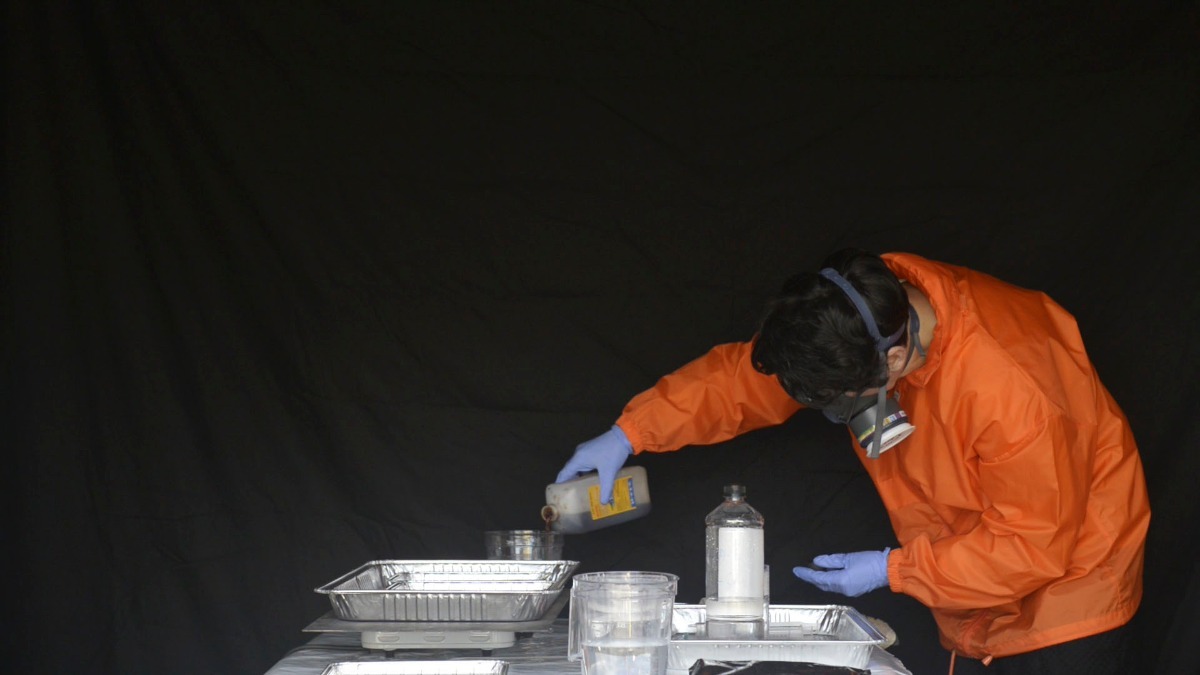
Kristīne Krauze-Slucka. The Vibrations of the Material Universe. Golden Thirst, 2021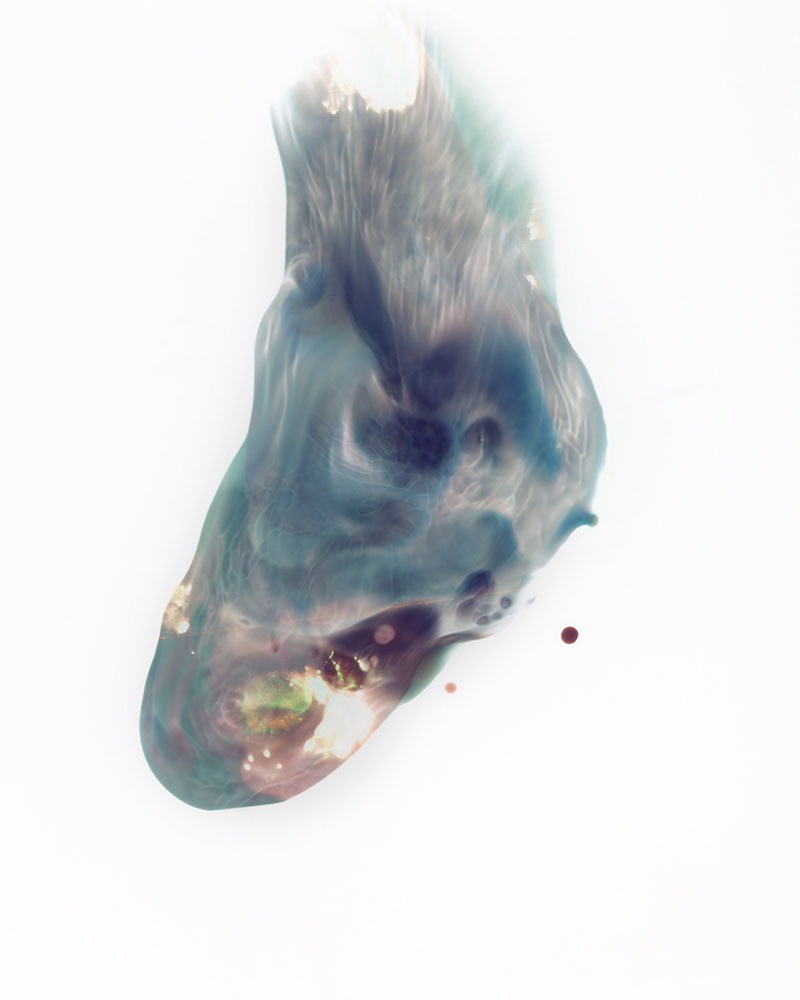
I am also fascinated by the changing nature of materiality in which not everything is under our control – where things like chemical reactions, fermentation, colour changes, collapse, drying out, and cracking can occur. Everything is in a state of change, slowly disappearing. Aspects of both time and human ecosystem activity converge in a material, and what Robert Smithson said comes to mind: "Every object, if it is art, is charged with the rush of time even though it is static." What is important to me is this dialogue between the time I live in and the material that somehow reveals the interactions of this relationship.
Within your practice you’ve spoken several times about the relationship between humans and technology. Do you think that technology is something that could become a threat to humans in the near future?
It was this issue that I tried to reflect on in Echo two years ago, and this pandemic era, to some extent, continues to make this observation relevant. We have reached a kind of space in which the boundaries of humans’ natural and technological states are slowly, invisibly and constantly merging, which is something that Sherry Turkle also talks about in her book Alone Together. In the book, she puts forward the thesis that due to the constant presence of technology in our daily lives, we are increasingly drifting into a parallel state of "elsewhere". This leads to a feeling of disorientation, which creates the illusion that we are never alone with ourselves and that, in fact, we should not be. This begs the question: what are we really connected to?
It seems frighteningly interesting to me to think that as we distance and isolate ourselves from the natural presence of human togetherness, as well as from the ritual of being alone with ourselves, we are expecting increasingly more from technology and less from each other. It seems to me that technology becomes a threat the moment a person ceases to enjoy loneliness and silence, ceases to delve into oneself and one’s feelings, and ceases to try to understand oneself and the environment in which one lives. Technology is great and it must be used, but only so far as it is done consciously, ethically, and for a good purpose.
What is the role of the artist in today's world?
To stimulate your own and the viewer's senses. To be brave. To maintain curiosity and to take notice.